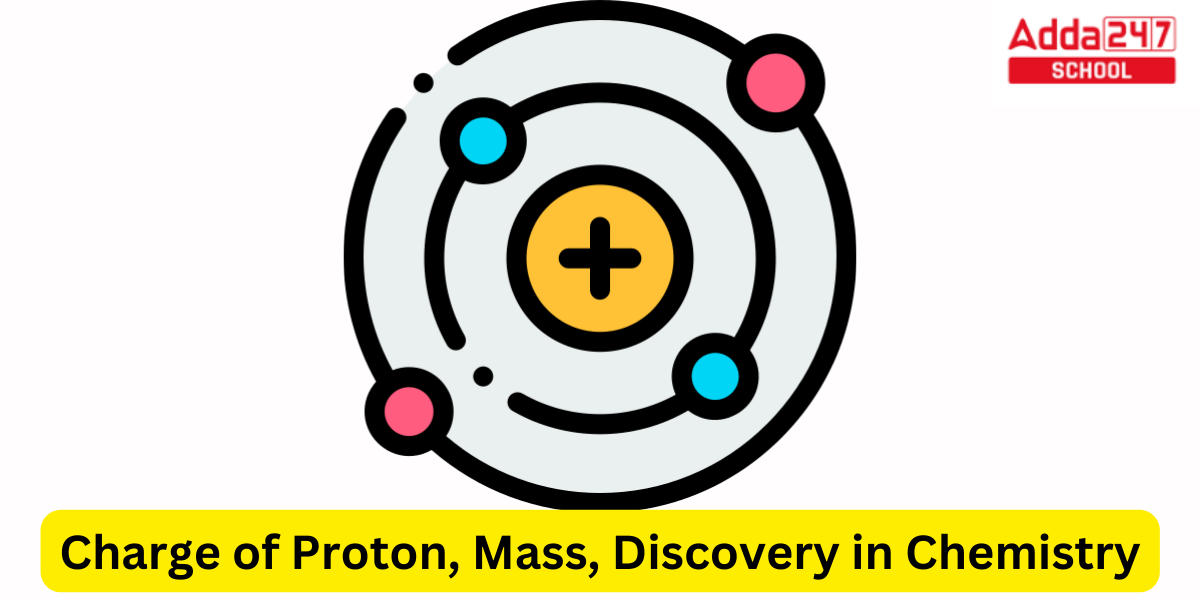Charge of Proton
The charge of proton is an important concept in physics and chemistry. Protons are one of the three fundamental particles that make up atoms, along with neutrons and electrons. While neutrons have no electric charge, electrons are negatively charged and protons are positively charged. The charge of proton is crucial in understanding how atoms and molecules behave and interact with each other.
The charge of proton is denoted by the symbol +e, where e is the elementary charge. The elementary charge is the electric charge carried by a single proton or electron, and its value is approximately 1.602 × 10−19 coulombs. This means that the charge of proton is exactly +1e, or 1.602 × 10−19 C.
Discovery of Charge of Proton
The charge of proton was first discovered by J.J. Thomson in 1897 through his famous cathode ray tube experiment. Thomson observed that when a high voltage was applied to a cathode ray tube filled with gas at low pressure, a beam of particles was produced that could be deflected by an electric or magnetic field. By measuring the deflection of the beam, Thomson was able to determine the charge-to-mass ratio of the particles, which he found to be much larger than that of electrons. This led him to conclude that the particles must be positively charged and much heavier than electrons, and he named them “corpuscles,” which later became known as protons.
Role of Charge of Proton
The charge of proton plays a crucial role in determining the structure and behavior of atoms. Protons are located in the nucleus of the atom along with neutrons, while electrons orbit around the nucleus in different energy levels or shells. The number of protons in the nucleus of an atom is known as the atomic number and determines the identity of the element. For example, all carbon atoms have six protons in their nucleus, while all hydrogen atoms have only one proton.
The charge of proton also affects how atoms interact with each other to form molecules. In a neutral atom, the number of protons is equal to the number of electrons, so the positive and negative charges cancel out, resulting in no net charge. However, when atoms lose or gain electrons, they become ions with a net charge, and their behavior and reactivity change accordingly. For example, when a hydrogen atom loses its electron, it becomes a positively charged hydrogen ion (H+), which can then bond with other ions or molecules to form compounds.
Charge of Proton: An Important Concept
The charge of proton is an important concept in physics and chemistry, and its discovery has revolutionized our understanding of the structure and behavior of atoms. The positive charge of protons plays a crucial role in determining the identity of elements and how they interact with each other to form molecules. The study of protons and their charge continues to be a fascinating and important area of research in modern science.
Discovery of Proton
The discovery of the proton is one of the most significant breakthroughs in the field of physics. The proton is a fundamental particle that makes up the nucleus of an atom and has a positive electric charge. This discovery led to a better understanding of the structure of atoms and laid the foundation for modern atomic theory.
- In the early 1900s, scientists were trying to unravel the mysteries of the atom.
- At the time, the prevailing theory was that the atom consisted of electrons and protons, which were thought to be two different types of particles.
- However, the existence of the proton was still just a hypothesis, and there was little experimental evidence to support it.
- In 1917, Ernest Rutherford, a New Zealand physicist, conducted a series of experiments that led to the discovery of the proton.
- Rutherford and his team were studying the behavior of alpha particles, which are positively charged particles emitted by certain radioactive materials.
- They fired alpha particles at a thin sheet of gold foil and observed how the particles interacted with the atoms in the foil.
- Most of the alpha particles passed through the foil without any interaction, but a small percentage of them bounced back in the direction from which they came.
- This was a surprising result, as the prevailing theory at the time was that alpha particles would pass straight through the atoms in the foil without being deflected.
- Rutherford realized that this result could only be explained if the atoms in the foil contained a tiny, positively charged nucleus that was responsible for deflecting the alpha particles.
- This nucleus had to be much smaller than the atom itself, but it had to contain almost all of the atom’s mass and positive charge.
- Based on this experiment, Rutherford proposed that the atom consisted of a nucleus made up of positively charged particles, which he called protons, surrounded by a cloud of negatively charged electrons.
- This model of the atom is known as the Rutherford model and laid the foundation for modern atomic theory.
- The discovery of the proton was a significant breakthrough in the field of physics.
- It provided experimental evidence for the existence of the nucleus and paved the way for further research into the structure of atoms.
- The discovery of the proton also had practical applications, such as in the development of nuclear power and the study of nuclear reactions.
In conclusion, the discovery of the proton by Ernest Rutherford was a pivotal moment in the history of physics. It provided a more accurate understanding of the structure of atoms and laid the groundwork for modern atomic theory. Today, the proton continues to be an important area of research in physics, with scientists studying its properties and behavior to gain a deeper understanding of the fundamental forces that govern our universe.
What is a Proton?
Protons are fundamental particles that play a crucial role in the structure and behavior of atoms. These subatomic particles have a positive electric charge and are found in the nucleus of every atom along with neutrons, which are electrically neutral.
First discovered by Ernest Rutherford in 1917, protons are now known to have a mass of approximately 1.007 atomic mass units (amu) and a charge of +1. This positive charge balances the negative charge of electrons, which orbit the nucleus in shells, creating an electrically neutral atom.
Characteristics of Proton
- One of the most important characteristics of protons is their role in determining the identity of an atom.
- The number of protons in an atom’s nucleus is called its atomic number, which determines its place on the periodic table of elements.
- For example, all atoms with six protons in their nucleus are carbon atoms, while atoms with eight protons are oxygen atoms.
- Protons also have a strong interaction with other particles through the electromagnetic force.
- This force is responsible for holding the nucleus together despite the repulsive forces between positively charged protons.
- The strong force, a fundamental force that operates at the subatomic level, also helps hold the nucleus together.
- In addition to their role in the structure of atoms, protons have important applications in fields like medicine, energy, and research. For example, proton therapy is a type of radiation therapy that uses high-energy protons to target cancer cells.
- Proton therapy is particularly useful in treating tumors located near sensitive organs, as it can minimize damage to healthy tissue.
Protons also play a role in nuclear power, as they are used in nuclear reactors to initiate and control nuclear reactions. The energy released during these reactions can be harnessed to produce electricity. However, the use of nuclear power is controversial due to safety concerns and the risk of nuclear accidents.
What is Electron Configuration of elements?
Mass of Electron, Proton, and Neutron in g, kg, mev, amu











 HPBOSE Compartment Date Sheet 2025 Out, ...
HPBOSE Compartment Date Sheet 2025 Out, ...
 RUHS Counselling 2025 Round 1 Seat Allot...
RUHS Counselling 2025 Round 1 Seat Allot...
 Bihar Board Dummy Registration Card 2026...
Bihar Board Dummy Registration Card 2026...










